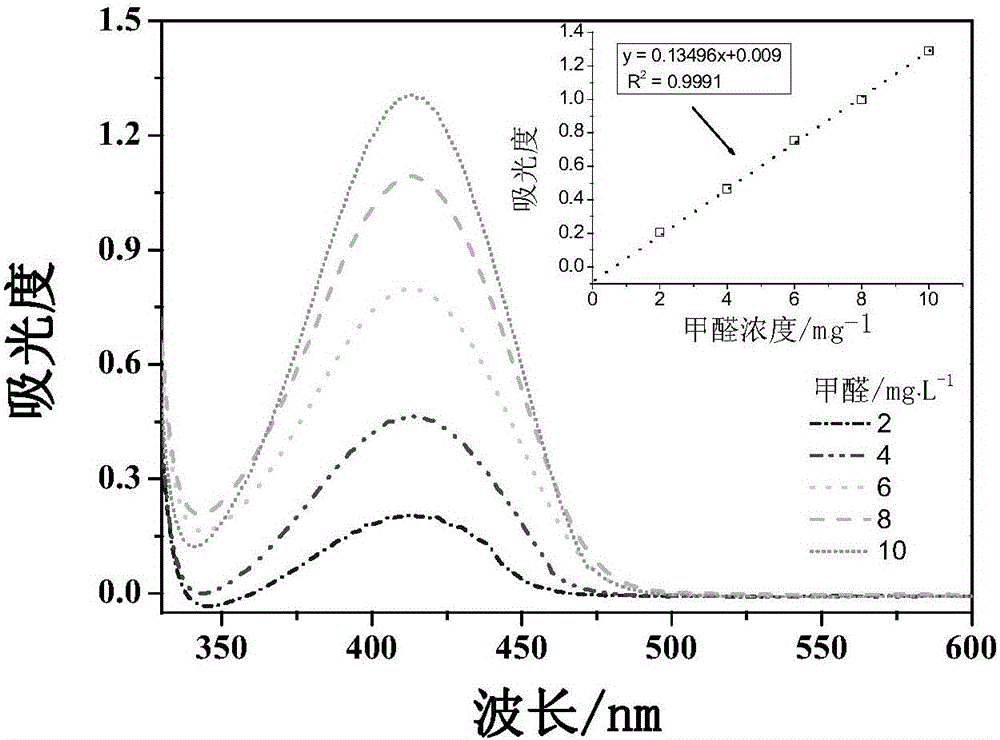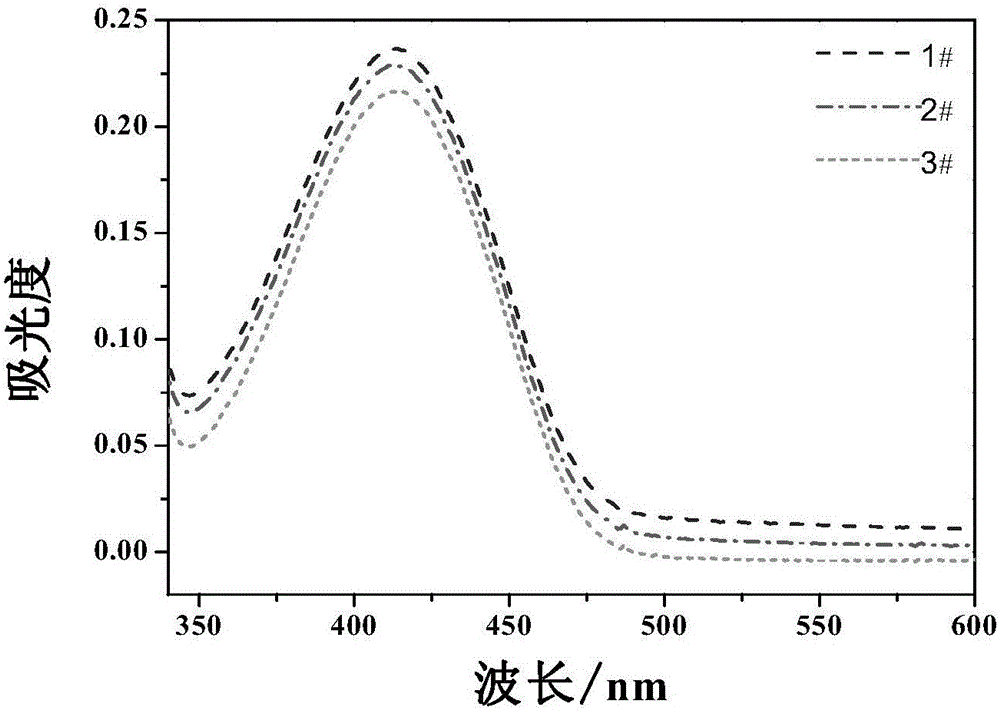Method for improving stability and sensitivity in content detection of formaldehyde in cosmetics
A technology for formaldehyde content and cosmetics, which is applied in the field of detection of formaldehyde content in cosmetics, can solve the problems of stability and sensitivity of test results, and achieve the effects of high sensitivity, accurate results and convenient operation
- Summary
- Abstract
- Description
- Claims
- Application Information
AI Technical Summary
Problems solved by technology
Method used
Image
Examples
Embodiment 1
[0035] 1. Pretreatment
[0036] Accurately weigh 2.5 g of the sample and place it in a 50 mL stoppered colorimetric tube. Add 25 mL of sodium sulfate solution, shake, add water to the mark, and place in a water bath at 40°C for 1 hour at constant temperature. The sample solution was rapidly cooled, transferred to a centrifuge tube, and centrifuged at 3000 rpm. Filter with a glass funnel, and the filtrate is used as the solution to be tested.
[0037] 2. Sample preparation
[0038] Take 5mL of the solution to be tested in a 10mL stoppered colorimetric tube. Add 5.00 mL of ammonium acetate solution of acetylacetone, shake well, heat in a water bath at 40°C for 30 min, and place at room temperature for 30 min to cool. At the same time, in order to reduce the influence of the solution itself or the turbidity of the solution after adding the color developer, take another 5.00mL of the solution to be tested, add 5.00mL of ammonium acetate buffer solution, shake well, and cool it...
Embodiment 2
[0043] Full Spectrum of Standard Formaldehyde Solution and Establishment of Standard Curve
[0044] figure 1It is the absorption spectrum after the color development of the formaldehyde standard solution with different concentrations and the acetylacetone color developer. As shown in the figure, the displayed spectrum of the standard solution has a maximum absorbance at 414nm, and the concentration of formaldehyde in the solution is directly proportional to the corresponding absorbance, which conforms to the Lambert-Beer law. Therefore, when there is no substance with absorbance other than formaldehyde in the measured solution at 414nm, the content of formaldehyde in the solution can be quantitatively detected according to the absorbance at 414nm and the calibration curve.
Embodiment 3
[0046] The influence of baseline drift on detection results
[0047] When analyzing actual samples, it can be observed that even after centrifugation, the solution to be tested and the solution after color development will appear slightly turbid. In order to reduce the interference of the turbidity on the absorbance detection, the ammonium acetate buffer solution without acetylacetone was used as the calibration solution during the experiment. The absorbance of the solution before and after color development is measured separately, and the absorbance of the two measurements is subtracted from the absorbance of the calibration solution. The difference between the obtained values is the net absorbance value of formaldehyde color development. Obviously, in the three tests, the spectral baseline drift caused by the scattering of fine particles in the solution or the stability of the instrument itself is different, which affects the reliability and accuracy of formaldehyde detect...
PUM
 Login to View More
Login to View More Abstract
Description
Claims
Application Information
 Login to View More
Login to View More - R&D
- Intellectual Property
- Life Sciences
- Materials
- Tech Scout
- Unparalleled Data Quality
- Higher Quality Content
- 60% Fewer Hallucinations
Browse by: Latest US Patents, China's latest patents, Technical Efficacy Thesaurus, Application Domain, Technology Topic, Popular Technical Reports.
© 2025 PatSnap. All rights reserved.Legal|Privacy policy|Modern Slavery Act Transparency Statement|Sitemap|About US| Contact US: help@patsnap.com



